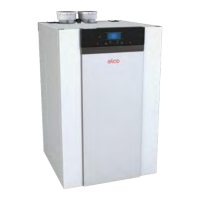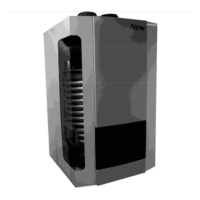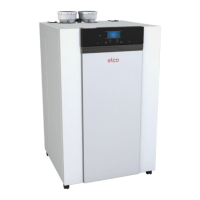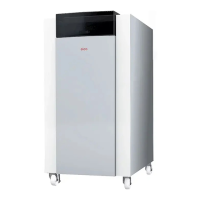33
Installation
Condensate connection
Condensate connection
For every m
3
of natural gas that is
burned, between 0.7 and 1.0 litres of
water can accumulate, due to a very
high energy utilization. Condensate,
which accumulates in the boiler, in
the waste gas pipe or in the chimney,
must be drained to the public sewage
system.
Inthisregard,country-specic
regulations must be taken into account.
A neutralization of the condensate may
be required. It must be possible for
the condensate to visibly drain into a
funnel-siphon (2) at the installation site.
Axedconnectiontothepublicsewer
system is not permitted.
For condensate drainage, only
corrosion-resistantandcertied
materials may be used. The drainage
must be carried out in a frost-free
space. The drainage pipe should have
a slope, so as to avoid a backwash of
the condensate.
Filling of the siphon
Before the boiler is taken into
operation, the equipment siphon (1)
mustbelledwithwater,soasto
prevent an emission of waste gas from
the condensate connection. Filling
is carried out most easily by pouring
approximately 0.5 litres of water into
the waste gas pipe (3).
Once each year the waste gas
connections have to be checked for
leakproofnessandthesiphonlled
with water.
AllPLUSwallhunggasred
condensing boilers contain a siphonic
condensate trap to collect and release
condensate.
The amount of condensate formed is
determined by the type of boilers and
the water temperature produced by the
boiler.
Condensate pipework.
Press the supplied plastic ribbon
tube onto the condensate drain at the
bottom of the boiler. Connect the tube
to the main condensate drain (minimum
diameter= 40mm) by means of an open
connection to avoid sewage gasses
coming into the boiler.
Fit a pipe work header for the
condensate drain behind the hydraulic
system.Forthatpurpose,theange
plates have holes allowing the
installation of a PVC drain of ø40mm
max. Use this drain to connect the
individual condensate drains of each
boiler.
Thesiphonofauegassystemcan
also be connected, if required, by
means of an open connection.
HAZARD:
Danger of death due to
poisoning! If the siphon is
notlledwithwater,orifany
connections are open, then escaping
waste gas can pose a hazard of
death for people.
3
1
2

